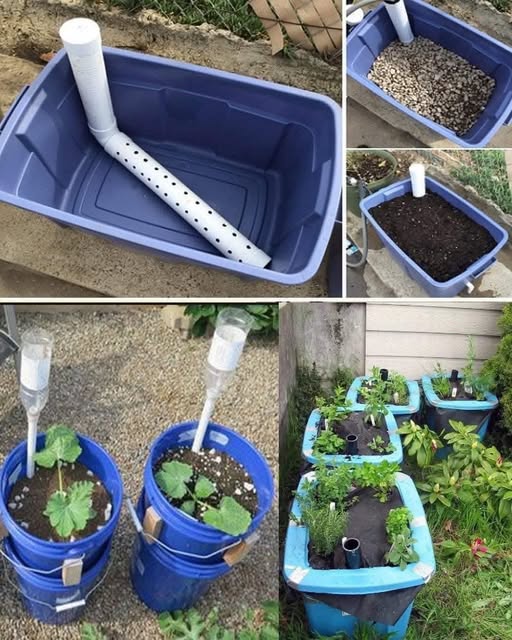Advertisement
Required Materials
- Large plastic storage containers with lids
- 1/2 inch PVC pipe or tubing
- Drainage gravel or pebbles (1-2 inches layer)
- High-quality potting soil
- Cotton rope or felt fabric for wicking
- Drill with 1/4 inch and 1/2 inch bits
- Utility knife
- Measuring tape
- Optional: water level indicator
Step-by-Step Construction Guide
1. Container Preparation
- Select two matching containers
- Drill 6-8 quarter-inch drainage holes in the bottom of the growing container
- Create a 1/2 inch hole for the water fill tube
- Sand any rough edges
2. Wicking System Installation
- Cut PVC pipe 2 inches taller than container height
- Create small holes along the bottom 3 inches of pipe
- Cut wicking material into 12-inch strips
- Thread wicking material through PVC pipe
- Secure wicking material at top and bottom
3. Layer Assembly
- Add 2-inch layer of drainage gravel
- Position wicking system vertically
- Fill with potting soil, leaving 2 inches at top
- Compact soil gently around wicking system
4. Water Reservoir Setup
- Place reservoir container below growing container
- Fill with water until 2 inches from top
- Install water level indicator if desired
- Mark maximum water level on reservoir
5. Planting and Maintenance
- Create planting holes in soil
- Install plants, spacing appropriately
- Water thoroughly from top initially
- Monitor water level weekly
- Refill reservoir when indicator shows low
Pro Tips
- Use dark containers to prevent algae growth
- Clean system thoroughly between growing seasons
- Add liquid fertilizer to reservoir monthly
- Position in full sun for optimal growth
- Consider adding wheels for mobility
Plant Selection Guide
Best plants for self-watering containers:
- Tomatoes
- Peppers
- Herbs
- Leafy greens
- Annual flowers
This system works efficiently for both indoor and outdoor growing, providing consistent moisture for healthy plant growth while conserving water.
Advertisement
Post Views: 512
